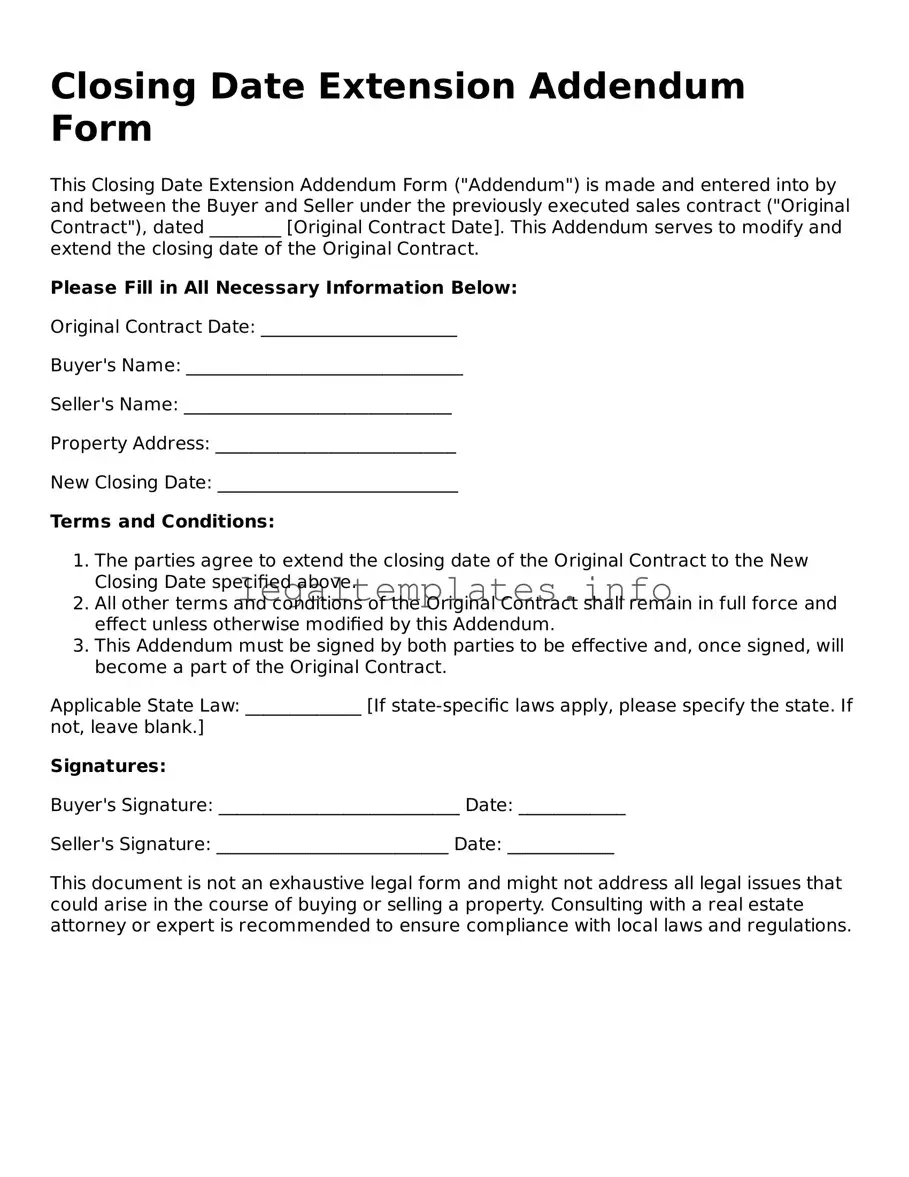Closing Date Extension Addendum Form
This Closing Date Extension Addendum Form ("Addendum") is made and entered into by and between the Buyer and Seller under the previously executed sales contract ("Original Contract"), dated ________ [Original Contract Date]. This Addendum serves to modify and extend the closing date of the Original Contract.
Please Fill in All Necessary Information Below:
Original Contract Date: ______________________
Buyer's Name: _______________________________
Seller's Name: ______________________________
Property Address: ___________________________
New Closing Date: ___________________________
Terms and Conditions:
- The parties agree to extend the closing date of the Original Contract to the New Closing Date specified above.
- All other terms and conditions of the Original Contract shall remain in full force and effect unless otherwise modified by this Addendum.
- This Addendum must be signed by both parties to be effective and, once signed, will become a part of the Original Contract.
Applicable State Law: _____________ [If state-specific laws apply, please specify the state. If not, leave blank.]
Signatures:
Buyer's Signature: ___________________________ Date: ____________
Seller's Signature: __________________________ Date: ____________
This document is not an exhaustive legal form and might not address all legal issues that could arise in the course of buying or selling a property. Consulting with a real estate attorney or expert is recommended to ensure compliance with local laws and regulations.
